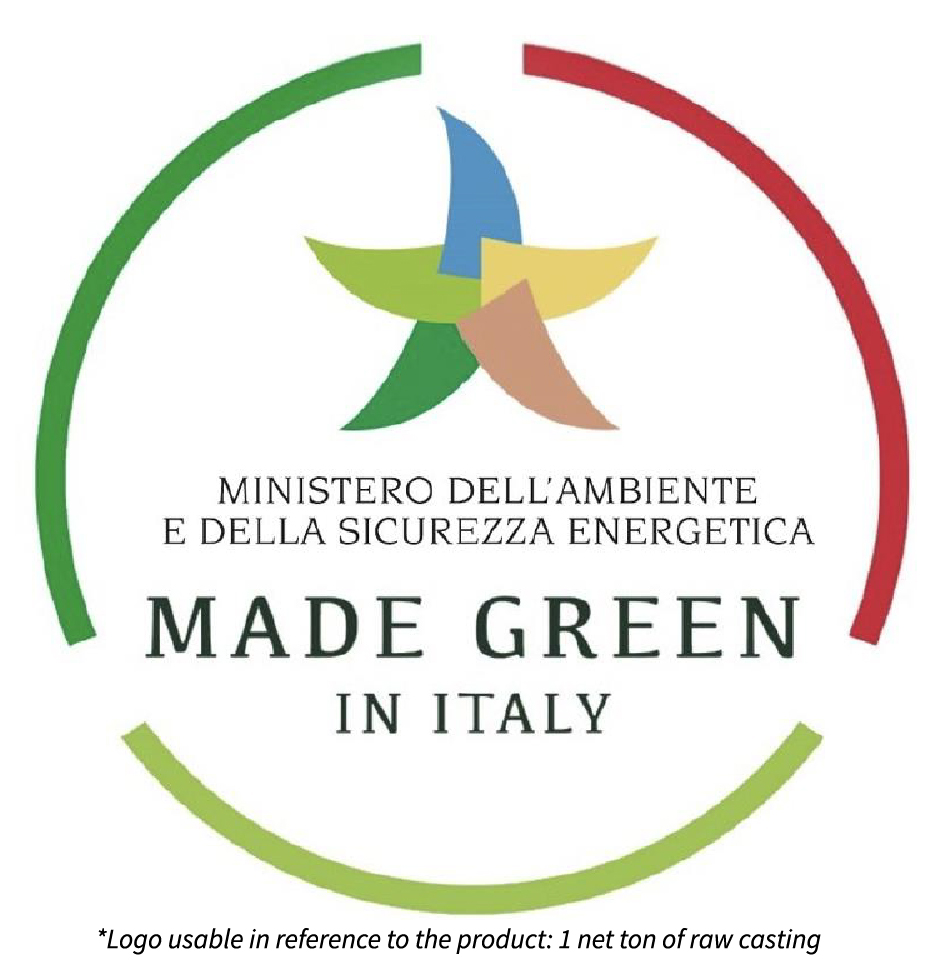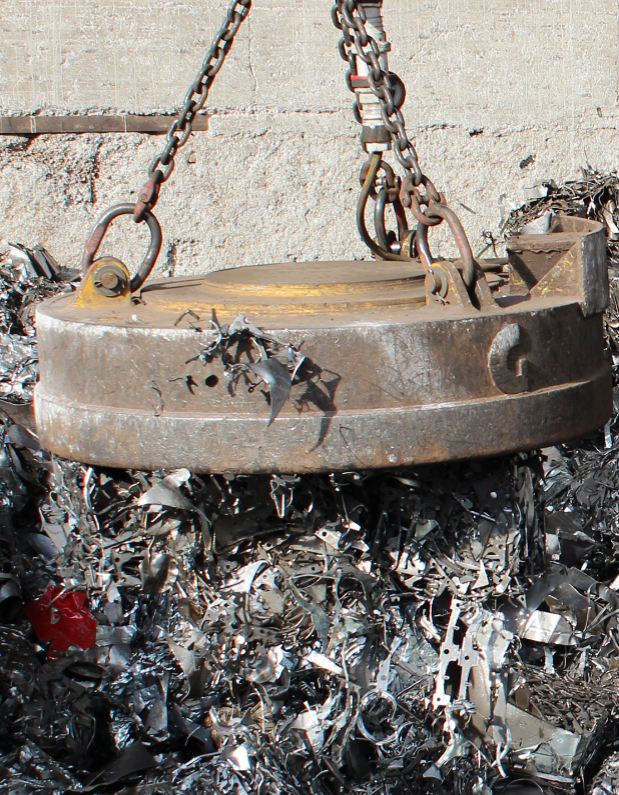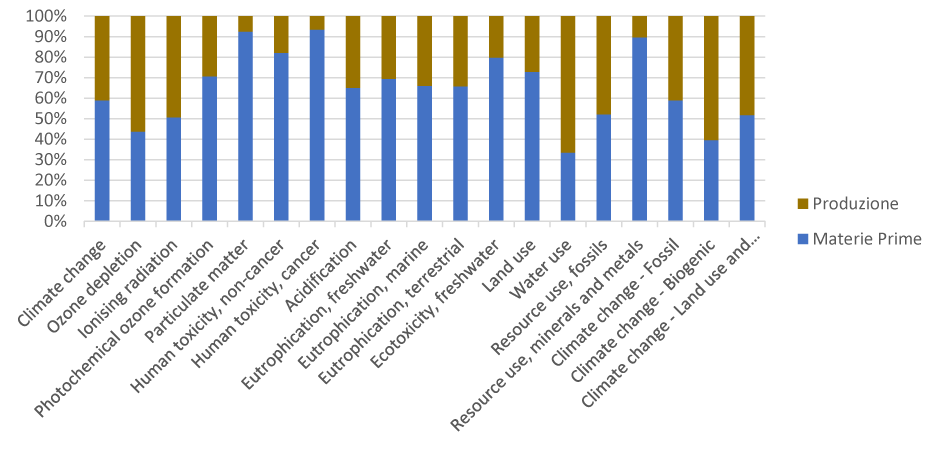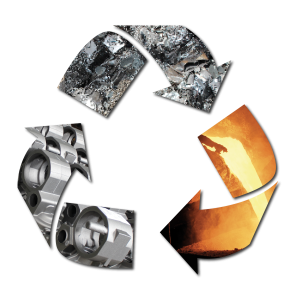
CERTIFICATION Made Green in Italy
Fonderie Guido Glisenti S.p.A.
| Statement published on | 4th of June 2024 |
| Valid until | 3rd of June 2027 |
| DIAP access link | Attachment C.2B DIAP Fonderia Glisenti |
|
Entity that verified the Study:
|
Bureau Veritas Italia S.p.a. |
1 . Introduction on climate change and ecological transition
The phenomenon of climate change is becoming increasingly evident and requires a profound change in the use of resources, which must be focused on processes of efficiency, Increase of energy from renewable sources and circularity in production processes. These issues have entered fully into the agenda of all governments, especially those of the European Union, which found in the Green Deal a central element of a strategy aimed at making Europe the first continent in the world to achieve carbon neutrality.
The European Union (EU) has defined a methodology for calculating the environmental impact of various types of products. This methodology is called the Product Environmental Footprint (PEF) and is based on the Life Cycle Assessment (LCA). The EU objective is to create a single market for all products that have “green” characteristics; the producers of these products want to take the opportunity to declare in a detailed, transparent and measurable way their approach to sustainability.
The recent legislation on “Made Green in Italy” has incorporated this new orientation into the Italian law. This legislation is contained in art. 21 of the new law 221/2015 concerning the Environmental chapter of the Stability Act published in 2015 and prefigures a completely new strategy for high quality national products. The MATTM implementing decree the D. n. 56 of the 21st of March 2018 and published in the Official Journal on the 29th of May 2018, is a recent addition to this legislation.
The Made Green in Italy label is based on the application of the PEF methodology – Product Environmental Footprint, defined by the European Commission Recommendation 2013/179 and subsequently with Recommendation EU 2021/2279, as a basis for policies to improve resource efficiency, environmental impact of products and their life cycles.
The implementation of this methodology allows to introduce a precise orientation in the company production that has the goal to associate with quality production also new sustainability topics, that has to be seen not only as tools to enhance the territory and the environment, but also as values of differentiation in the market and development of the circular economy.

The adoption of this scheme has the following goals:
-
Promote sustainable production and consumption models;;
-
Help to implement EU environmental strategies;
-
Stimulate the continuous improvement of products and the reduction of the negative impacts they have in the various phases of their life cycle;
-
Promote informed, conscious and sustainable consumer choices;
-
Guarantee the transparency and comparability of the environmental performance of products;
-
Strengthen the image of “Made in Italy” products to promote their competitiveness;
-
Define an effective method of communication
Fonderie Guido Glisenti S.p.A. wants to take a further step forward in demonstrating its sustainable path towards carbon neutrality, in accordance with a strategy it has been pursuing for several years. Please note that with this certification, Fonderie Guido Glisenti S.p.A. attests not only its environmental footprint but also regulatory compliance to all environmental requirements required by public entities such as AIA, which have been checked by the Certification Entity.
2 . Product information
This Environmental Footprint Declaration concerns cast iron castings produced in the plant in:
Via Italia 70/72, Villa Carcina (Brescia) Italy.
The product studied corresponds to the code of the Classification of Products by Activity (CPA): C24.51. Cast iron castings.
The conventional definition of cast iron is a ferro-carbon alloy where iron is the predominant element and where carbon is present in a content greater than 2%. When the carbon content is less than 2%, the alloy is called Steel [1]. In terms of usage, cast iron may have a large number of end uses.
[1] . For some chromium steel castings, it is possible to have a carbon content higher than 2%, typically between 2,06% to 2,10%.

The following uses of cast iron castings are listed as possible end uses:
-
Various components for the Agricultural, Earthmoving and Automotive Sectors;
-
Industrial valves – Cast iron globe valves;
-
Spheroidal graphite cast iron pipes;
-
Ductile cast iron pipes – Polyethylene sleeve for construction site application;
-
Ductile iron pipes, fittings and accessories;
-
Devices for crowning and closing road manholes;
-
Pressure vessels not exposed to flame.
Cast iron castings are also produced according to the design and technical specifications of the main manufacturers (automotive, mechanical, tractor, electric, etc.), in various structures and chemical compositions:
-
Lamellar graphite cast iron castings;
-
Spheroidal graphite iron castings;
Cast iron castings are therefore not characterized by their intended use as a product but by their chemical composition and the unit of measurement is the ton, since it is an intermediate product
3. Declaration information
The present “Environmental Product Footprint – “Cast iron casting”” refers to the study “Product Environmental Footprint of the cast iron castings produced by Fonderie Guido Glisenti S.p.a. in Villa Carcina plant – Ver.01 of 23/11/2022”.
The document has been submitted ad verified by an independent entity (Bureau Veritas).
Environmental statements for different schemes are not comparable.
The following rules and recommendations have been used to conduct the study and this declaration:
-
ISO 14040:2021 Environmental management – Life cycle assessment – Principles and framework
-
ISO 14044:2021 Environmental management – Life cycle assessment – Requirements and guidelines
-
Raccomandazione 2021/2279/EU Commission Recommendation on the use of common methodologies to measure and communicate environmental performance throughout the life cycle of products and organisations.
-
Product Category Rules (PCR) on Iron Castings (NACE 24.51) version 1.0 of May 2022;
-
Regulation for the implementation of the voluntary national scheme for the evaluation and communication of the environmental footprint of products, called «Made Green in Italy», referred to in article 21, paragraph 1, of law n.221 of the 28th of December 2015.
4. Summary of the environmental footprint study

The objective of this study is to carry out an analysis of the environmental impacts for the cast iron product of the Guido Glisenti Foundry, in accordance with the Product Class Rules for cast iron, published on the website of the Ministry of Ecological Transition as part of the Made Green in Italy scheme.
The functional unit considered for this study is:
1 net ton of raw casting (at the foundry exit gate).

In relation to the key aspects of the functional unit, these are defined below:
Table1: Key aspects of the functional unit
| What? | Cast iron castings |
| How much? | 1 net ton of raw casting (at the foundry exit gate) |
| How well? | Raw ton casting is an intermediate product that can be used for a wide variety of final applications. For the ton of raw casting as an intermediate product to be used in final applications, the “How Well” is highly dependent on the downstream application and its specific requirements cannot be generalized. The “how well” is specified by the product standard. |
| For how long? | The characteristics of an intermediate product make it impossible to define a durability “a priori”, which strongly depends on the final usage |
It should be noted that in order to obtain a functional product unit for its use, losses of raw material from the production stage (yield from the foundry process) are included in the production calculation.
The product under study was built considering an average recipe of types of cast iron produced over a representative year of company production. Fonderie Guido Glisenti uses only induction electric furnaces and green sand moulding system for production.
The table below summarizes the main production characteristics of the product under study.
Table2:Definition of the Product under study
| Ductile cast iron | Moulding technique | Ductile cast iron | ||
| % Production | Furnace | Moulding | % Production | |
| 100% | Electric | Green | 100% | |
→ The data sets used are not EF (Environmental Footprint) compliant datasets, as these datasets are only available for PEF/OEF studies conducted according to the PEF/CR published on the website: http://ec.europa.eu/environment/eussd/smgp/PEFCR_OEFSR.htm
Some processes were excluded from the modelling process, as reported in the related PCR:
→ packaging for the supply of raw materials and auxiliary materials; most of these are supplied unpacked on trucks; the share of raw materials and auxiliary materials with packaging is minimal and therefore has a not relevant impact;;
→ the company’s infrastructure and production plants because considering the depreciation, the impact on an annual basis is not relevant.
For the product under study the quality of the data is very good.
The characterized results of the study are presented below.
Table3: Characterized impact results for the cast iron rough casting product
| Category of impact | Unit | Cycleof life from cradle to gate |
| Climate change total | kg CO2 eq | 1.968,05 |
| Fossil climate change | 1.961,18 | |
| Biogenic climate change | 5,05 | |
| Climate change - land use and changeof use of the soil | 1,83 | |
| Ozone depletion | kg CFC-11 eq | 2,09E-04 |
| Particulate matter | Disease incidence | 148,39 |
| Radiation ionizing, human health | kBq U235 eq | 7,43 |
| Production of photochemical ozone, human health | kg NMVOCeq | 3,16E-04 |
| Acidification | mol Ht eq | 3,72E-05 |
| Terrestrial Eutrophication | mol Neq | 4,76E-06 |
| Fresh waters Eutrophication | kg P eq | 8,98 |
| Sea Eutrophication | kg Neq | 0,84 |
| Human Toxicity, cancer | CTUh | 1,79 |
| Human Toxicity, non-cancer | CTUh | 18,78 |
| Ecotoxicity | CTUe | 46.775,96 |
| Use of the soil | PT | 6.747,57 |
| Consumption of water | m' eq | 455,42 |
| Consumption of mineral resources and metals | kg Sb eq | 29.043,84 |
| Consumption of fossil resources | MJ | 0,01 |
The figure below presents the impacts by life cycle phase for the product under study.

Figure1: Life cycle impacts for 1 ton of cast iron
The most relevant impact categories found in this study are, in order of relevance:
-
Climate change
-
Particulate matter
-
Resource use, fossils
-
Ecotoxicity, freshwater
-
Resource use, minerals and metals
-
Eutrophication, freshwater
The most relevant processes for cast iron castings are represented by:
Table4: Most significant processes for the relevant impact categories
| Category with the most significant impacts | Relevant Processes |
| Climate change |
|
| Particulate matter |
|
| Eutrophication, freshwater |
|
| Ecotoxicity, freshwater |
|
| Resource use, fossils |
|
| Resource use, minerals and metals |
|
The sum of the weighted score of the three impact categories indicated in the reference PCR is equivalent to 116.07 mPt, which classifies Fonderie Guido Glisenti ductile cast iron castings product in A class..
5. Comparison with the benchmark
There are three expected performance classes (A, B and C) and are defined by the benchmark value and the upper and lower thresholds, calculated for the representative product “raw cast iron castings”.
In particular, products whose impact calculated as a single value (the sum of the weighted results of the three most relevant impact categories) is greater than the upper threshold value shall be classified in Class C. Products whose impact calculated as a single value (the sum of the weighted results of the three most relevant impact categories) is less than the lower threshold value shall be classified in Class A. Products whose impact calculated as a single value (the sum of the weighted results of the three most relevant impact categories) is between the upper and lower threshold values shall be classified in Class B.
The values of the benchmark and the definition of the environmental performance classes are listed below.
Table 7: Benchmark as a single value
| Representative product | Unit of measurement | Benchmarks |
| PR – Cast Iron Castings | mPt | 163,92 |
| Class | Cast iron rough castings | Unit of measurement |
| A | PP < 141,44 | mPt |
| B | 141,44 < PP < 193,03 | mPt |
| C | PP ≥ 193,03 | mPt |
Table 9: Calculation of environmental performance class for cast iron casting
| Impact category | Raw Cast iron castings | Unit of measurement |
| Climate change | 51,19 | mPt |
| Particulate matter | 47,61 | mPt |
| Consumption of resources, minerals and metals | 17,27 | mPt |
| Total | 116,07 | mPt |
The single score calculated for the raw cast iron casting is 116,07 mPt, below the threshold value of 141,44 mPt; therefore, the product studied is in class A.
The impact of the cast iron produced by Fonderie Guido Glisenti is below the benchmark of 116,07-163,92 = -47,85 mPt (-29,19 %) and is lower than the class A threshold of 116,07-141,44 = -25,37 mPt (-17,94%).
These good results were achieved thanks to a resource efficiency strategy that the foundry has been pursuing for several years.
6. Additional environmental information
Following the indications in the PCR, the percentage of recycled material used in the furnace recipe is explained, distinguishing between internal scrap (material coming from internal recycling of the casting ad feeding systems of the casting) and purchased scrap from outside (End of Waste steel scrap).
In the year under analysis, the percentage of internal scrap used in recipes was 35,0% and the percentage of external scrap was 40,4%.


